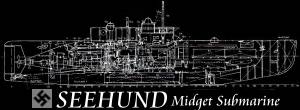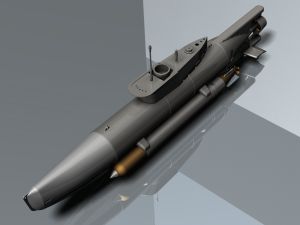 |
|
|
|
| Seehund Operations | ||||||||||||
|
|
||||||||||||
|
Seehund operations
In March 1945 there were a total of twenty-nine
Seehund sorties of which nine boats failed to return. MTBs sank two, the frigate
Torrington another, three were claimed by aircraft, one was sunk by HMS Puffin
and the fate of the other two is unknown. The sinking by Puffin was a pyrrhic victory: on 26 March the
Puffin rammed the Seehund off Lowestoft. However, in the collision both the Seehund's torpedoes exploded
and Puffin was so badly damaged that she was not repaired. But three ships totaling
5267 tons were sunk: the 2878-ton Tauber Park on 13 March off Southwold, the 833-ton Jim on 30 March south-east
of Orfordness and the 1556-ton on the 26th off the North Foreland. |
||||||||||||
|
|
||||||||||||
|
A summary of Seehunde operations shows that there were 142 sorties which resulted in the loss of nine
ships totaling 18,451 tons sunk and three ships of 18,354 tons damaged. Against this thirty-five craft
were lost. This is a relatively low figure especially considering that twenty of these losses were due to bad
weather. Had their crews been better trained and with more experience, a far higher total of shipping would
have been sunk. As one commentator has concluded: Fortunately for the Allies, the Seehund came too late. A little earlier and Allied ships and landing craft might have suffered disastrously from the attentions of the anti-submarine defenses would have been swamped if large groups had been able to make coordinated attacks. It has to be asked whether the situation would be markedly different today.  In retrospect it has to be said that that all the effort expended by the Germans on the
K-Verband were wasted and never justified in terms of the results achieved. The sheer loss of life in these operations can
only be compared with that of the Japanese Kamikazes. Any better results could hardly be expected, given the
hurried design of the various craft, the hasty training of their operators and the nature of Allied counter-measures. Their sole 'success' (if such a term can be
used) could be in the huge numbers of Allied forces deployed to guard against the menace posed by the
K-Verband. It is estimated that over 500 ships and 1000 aircraft were specifically tasked with hunting German
midget craft. Obviously these units and the man-power could have been employed elsewhere.
However, playing the part of the 'fleet in being' was no substitute for sinking Allied ships. The following
comments on the Biber by one perceptive observer are an epitaph for all the weapons.
In retrospect it has to be said that that all the effort expended by the Germans on the
K-Verband were wasted and never justified in terms of the results achieved. The sheer loss of life in these operations can
only be compared with that of the Japanese Kamikazes. Any better results could hardly be expected, given the
hurried design of the various craft, the hasty training of their operators and the nature of Allied counter-measures. Their sole 'success' (if such a term can be
used) could be in the huge numbers of Allied forces deployed to guard against the menace posed by the
K-Verband. It is estimated that over 500 ships and 1000 aircraft were specifically tasked with hunting German
midget craft. Obviously these units and the man-power could have been employed elsewhere.
However, playing the part of the 'fleet in being' was no substitute for sinking Allied ships. The following
comments on the Biber by one perceptive observer are an epitaph for all the weapons. The failure of the Biber and, in spite of the courage displayed, of the K-Force reflects the failure of the Kriegmarine's and ultimately, Nazi Germany's ability to wage war successfully at sea. The organization of the K-Force came at a time when the Third Reich, through its flawed strategy was being assailed on three fronts-in Italy, in Russia and from the air-by a combination of the most powerful nations on earth. K-Force and the remaining ships of the Kriegmarine failed to stop the invasion of Normandy in June 1944 and the opening of a fourth front. The creation of Force was a desperate and unsuccessful bid to challenge the Anglo-American invasion fleet . . . the failure of the Biber programme and others of Nazi Germany's midget submarine projects reflects the failure of the Third Reich's naval strategy. A extract from the Book : Midget Submarine of the Second World War by Paul Kemp ISBN : 1-86176-042-6 - Chatham Publishing |
||||||||||||
|
|